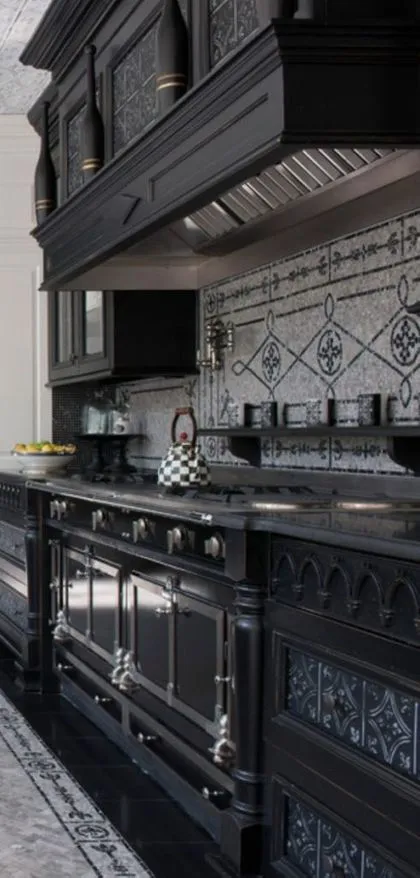Gothic Kitchen Designs [Top 5] Overview
Embarking on a gothic kitchen design project can transform your cooking space into a dramatic and enchanting haven. This style, characterized by its dark colors, ornate details, and historical influences, offers a unique aesthetic that sets it apart from other kitchen designs. Creating a gothic kitchen involves carefully selecting elements that capture the essence of the style, from cabinets and countertops to lighting and decor. In this guide, we’ll explore five key design ideas to help you create the gothic kitchen of your dreams. We will delve into the key elements, color palettes, furniture choices, and finishing touches that define the gothic style, ensuring that your kitchen becomes a stunning showcase of timeless elegance and dark beauty. These tips will help you make your kitchen a reflection of your personality.
Defining Gothic Kitchen Style
Gothic kitchen design is a blend of history, drama, and elegance. It draws inspiration from the Gothic architectural style, which flourished in Europe during the medieval period. This style is characterized by pointed arches, intricate stonework, and dramatic lighting. In the kitchen, this translates to dark, rich colors, often-ornate cabinetry, and statement-making details. The goal is to create a space that feels both luxurious and mysterious, with a touch of old-world charm. It’s about creating a mood that goes beyond mere functionality, incorporating elements that evoke a sense of history and grandeur. This style is not for the faint of heart; it embraces the darker side of design, creating a space that is both captivating and unforgettable.
Key Elements of Gothic Design
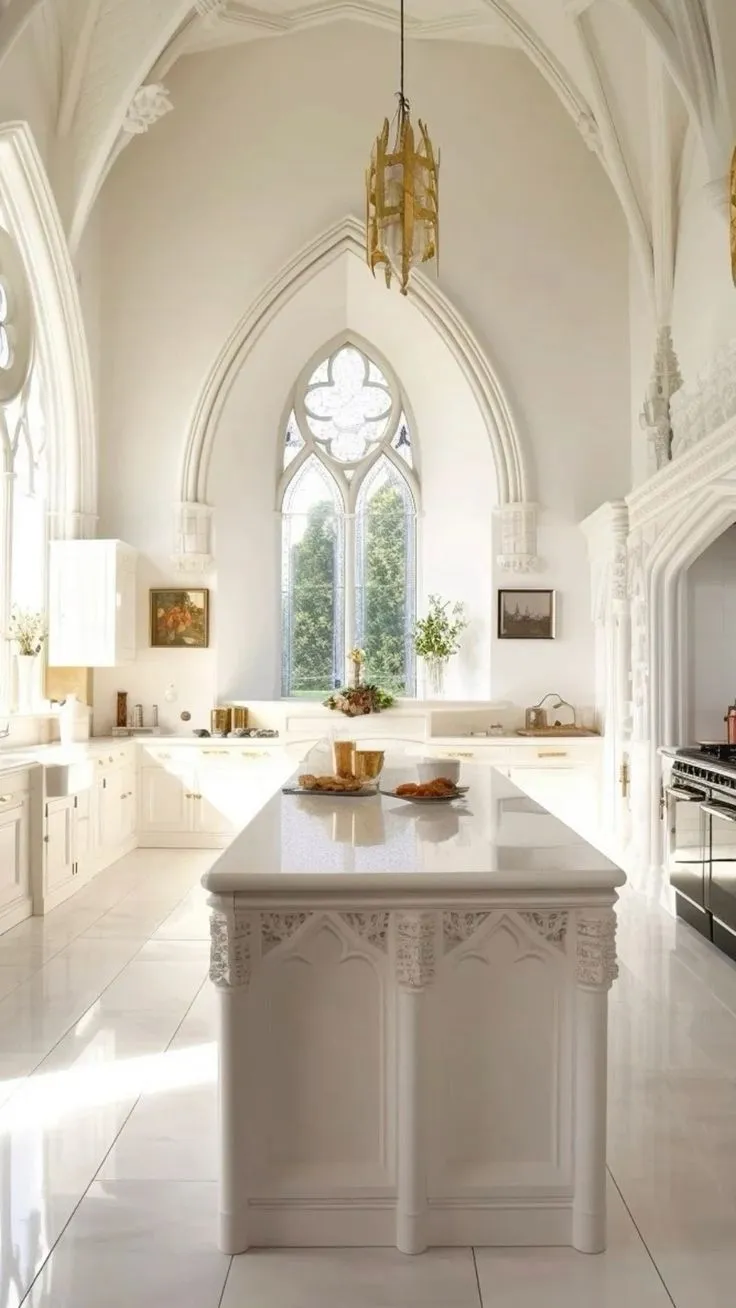
Several key elements define the Gothic kitchen style. These elements work together to create the overall aesthetic. Dark wood cabinets are a staple, often featuring intricate carvings or detailing. Countertops made from materials like granite or marble provide a luxurious feel. Statement lighting, such as chandeliers or wrought-iron fixtures, is essential for setting the mood. Additionally, incorporating gothic-inspired hardware, like ornate handles and pulls, adds to the theme. The use of textures, like velvet or damask, in window treatments or seat cushions, can also enhance the gothic feel. By incorporating these elements, you can transform your kitchen into a gothic masterpiece that truly captures the essence of the style.
Color Palette for Gothic Kitchens
The color palette is critical in achieving a gothic kitchen aesthetic. Dark, moody colors are the foundation of this style, creating a sense of depth and drama. Consider incorporating shades of black, deep reds, purples, and forest greens. These colors can be used on cabinetry, walls, or even as accents. The key is to create a space that feels both inviting and mysterious. To balance the dark tones, you can incorporate lighter elements, such as metallic finishes or lighter countertops. When selecting your color palette, consider the overall mood you want to create and how the colors will work together to achieve the desired aesthetic. The right color scheme will set the stage for the gothic kitchen of your dreams, providing a foundation for all the other design elements.
Dark and Dramatic Colors
Embracing dark and dramatic colors is essential for creating a gothic kitchen. These colors evoke a sense of mystery and elegance, which are hallmarks of the gothic style. Black, deep charcoal, and navy blue can be used for cabinets and walls, creating a dramatic backdrop. Deep reds, such as burgundy and crimson, add a touch of opulence, while purples, such as plum and amethyst, provide a regal feel. The key is to balance these dark colors with lighter elements. The combination of dark and dramatic colors establishes the mood, contributing to the gothic kitchen’s overall atmosphere.
Earthy and Neutral Tones
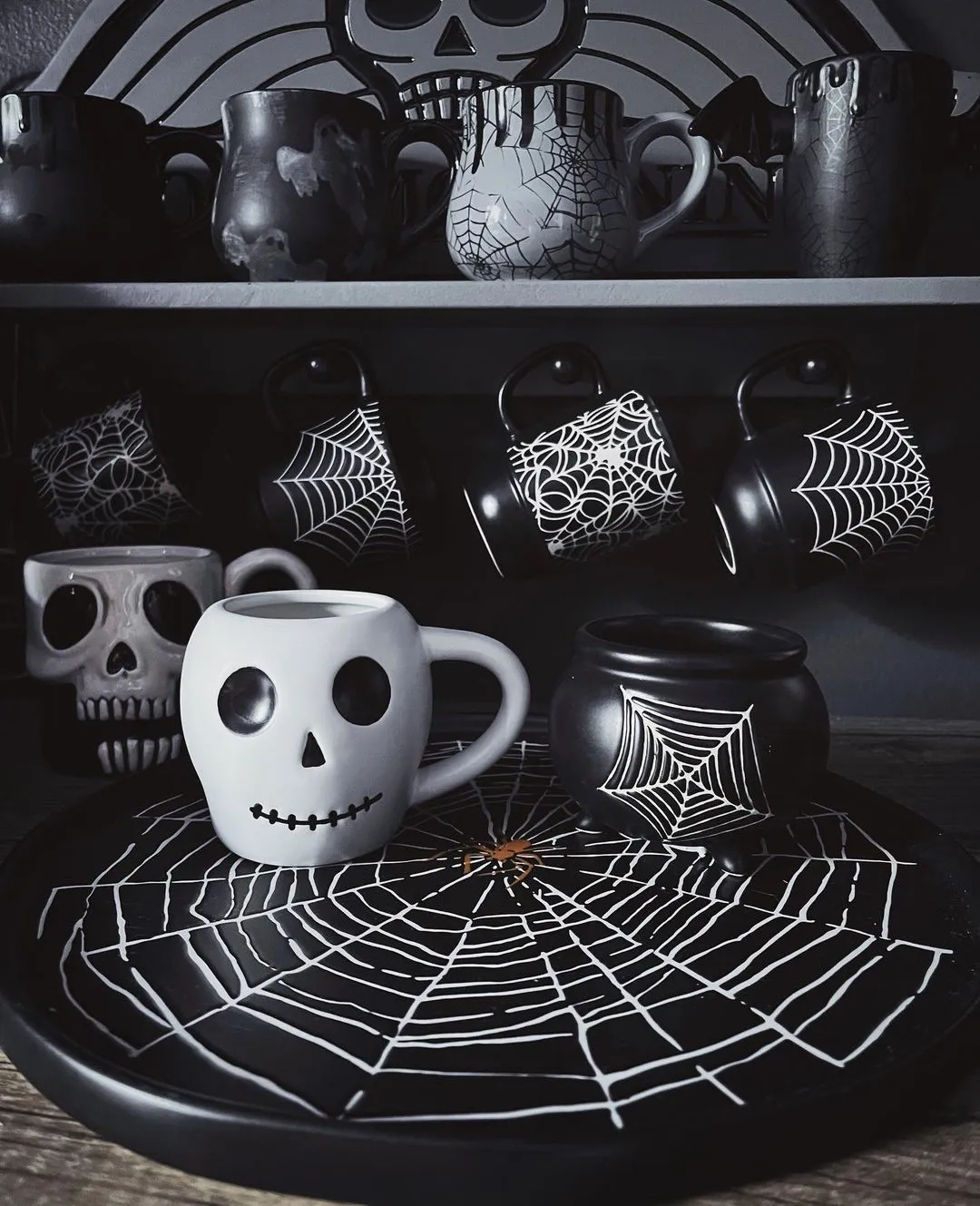
While dark colors are central to the gothic style, incorporating earthy and neutral tones can create balance and prevent the space from feeling too heavy. Consider using shades of cream, beige, or light gray on walls or as accents. These lighter colors can soften the overall look and provide contrast to the darker elements. You can also incorporate natural materials, such as wood or stone, in their natural tones. These earthy colors bring a sense of warmth and grounding to the space, helping to balance the dramatic elements. Using earthy and neutral tones is important for creating a cohesive and inviting gothic kitchen.
Essential Furniture Pieces
The furniture in a gothic kitchen plays a crucial role in defining the style. Choose pieces that reflect the gothic aesthetic. Dark wood furniture is a must, often featuring intricate carvings or details. A large, imposing dining table is a great centerpiece, paired with high-backed chairs. Consider incorporating a kitchen island with a dark finish and decorative accents. If space allows, include a display cabinet to showcase china or decorative items. The goal is to choose furniture that evokes a sense of history and grandeur. Selecting furniture that aligns with the overall theme is key to completing the gothic kitchen design.
Gothic-Inspired Kitchen Cabinets
Kitchen cabinets are a prominent element in a gothic design. Dark wood cabinets, often with raised panels or intricate carvings, are a staple. Consider a deep mahogany, ebony, or even a stained wood finish to enhance the gothic feel. Another option is to paint the cabinets in a dark color and add decorative hardware, such as ornate knobs and pulls. The style of the cabinets should reflect the overall design of your gothic kitchen. Ensure the cabinets add to the gothic aesthetic by incorporating elements, which reflect the dark and dramatic nature of this design.
The Role of Countertops
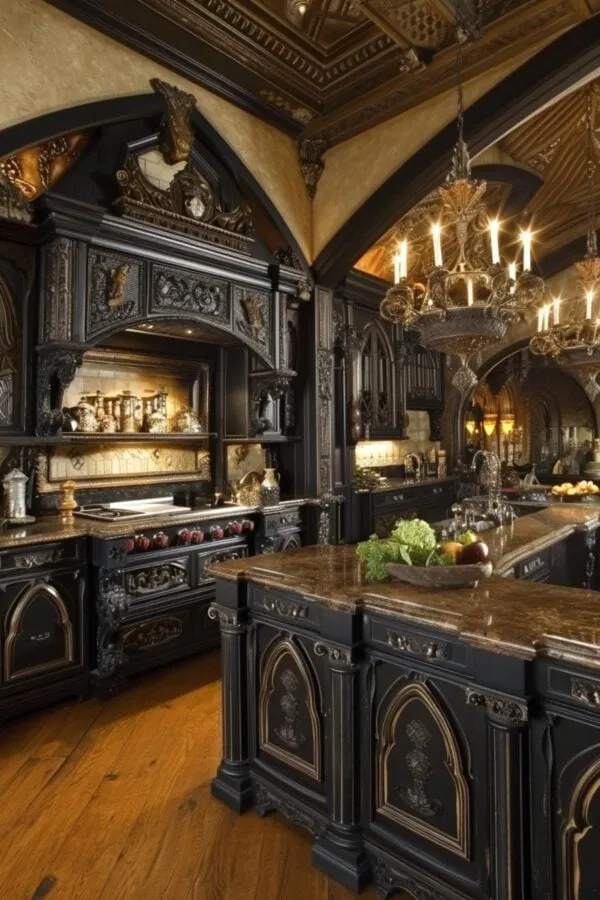
Countertops are essential in a gothic kitchen, contributing to both the look and the feel of the space. Granite or marble countertops are great choices, offering a luxurious and elegant feel. Consider darker shades, such as black granite or deep gray marble, to complement the dark cabinetry. Quartz countertops are another option, offering durability and a range of dark color options. When choosing countertops, consider the overall look and feel you want to create. Choosing countertops that reflect the gothic aesthetic is key to a successful design. These surfaces must also be functional and durable.
Statement Lighting Fixtures
Lighting is an important part of gothic design, setting the mood and adding drama. A chandelier is a classic choice, especially those with ornate details or wrought-iron finishes. Sconces and pendant lights can add additional lighting, while also enhancing the gothic aesthetic. Dimmer switches are a great feature, allowing you to control the mood and create the desired atmosphere. Carefully choosing lighting will enhance the gothic atmosphere. The correct choice of lighting fixtures will create a space that feels both luxurious and mysterious.
Gothic Kitchen Decor Details
Decor details are what make a gothic kitchen truly unique. Incorporate elements that reflect the style’s historical roots. Decorative items like antique mirrors and gothic-inspired artwork can enhance the gothic aesthetic. Adding candles or candelabras can create a warm and inviting atmosphere. Choose accent pieces that enhance the gothic theme, and make sure all of the details work together to create a cohesive and stylish design. These details create a kitchen that is both functional and visually stunning.
Accents and Ornaments
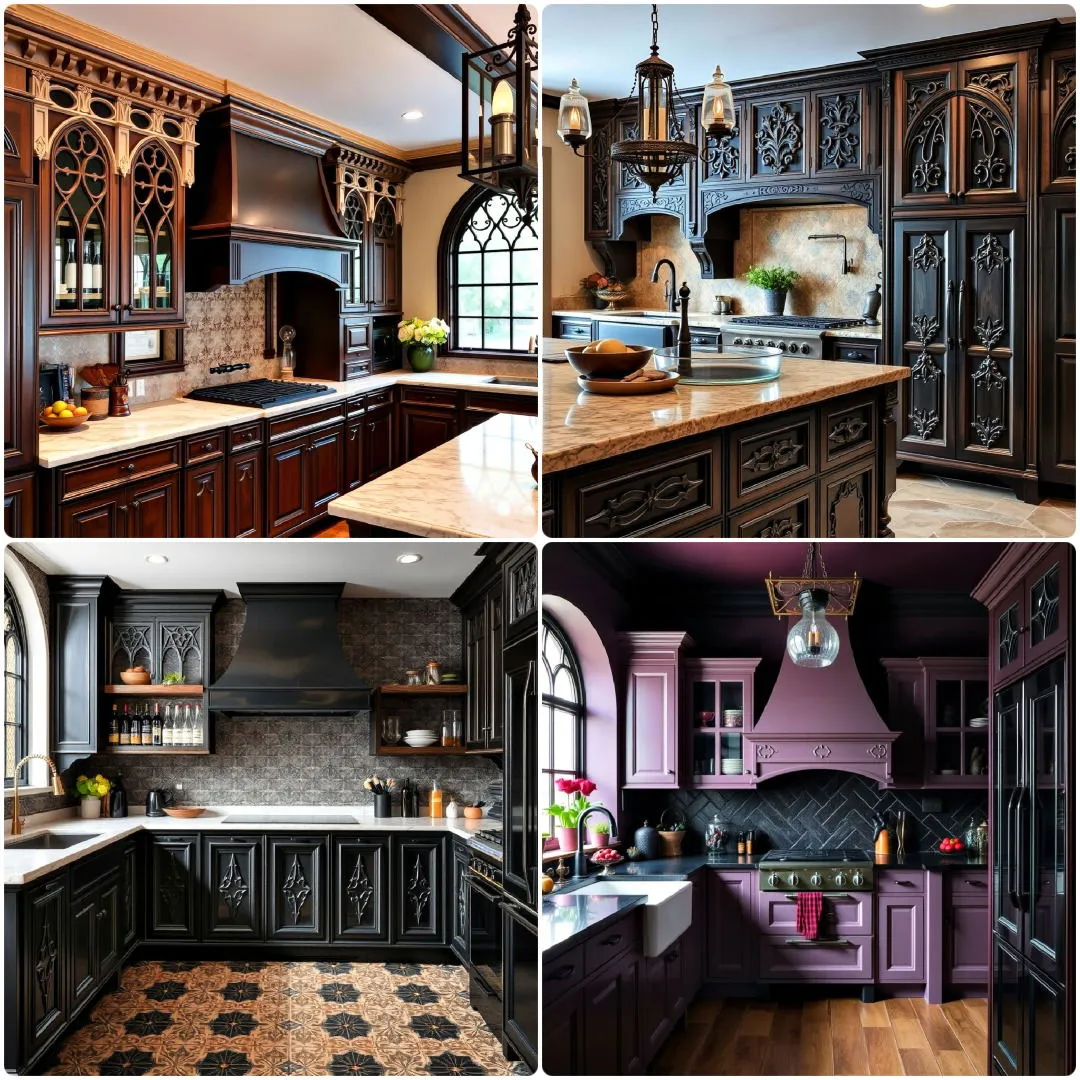
Accents and ornaments are essential in adding character to your gothic kitchen. Include items like antique mirrors, ornate picture frames, and gothic-inspired artwork. Wrought-iron or metal accents can add to the gothic feel. Display vintage china or glassware in a display cabinet. These decorative items contribute to the overall theme and add a touch of history to your kitchen. Carefully selected accents will turn your kitchen into a unique gothic space.
Textiles and Fabrics
Incorporating the right textiles and fabrics can enhance the gothic kitchen design. Consider incorporating velvet or damask fabrics for window treatments or seat cushions. Choose dark, rich colors, such as deep reds, purples, or blacks, to match the overall theme. Using patterned fabrics can add texture and visual interest. By incorporating the right textiles and fabrics, you can create a space that is luxurious and inviting. The proper use of textiles adds to the gothic charm.
Embracing Gothic Kitchen Aesthetics
Embracing the gothic kitchen aesthetic is about creating a space that is both dramatic and elegant. It’s about incorporating elements that reflect the style’s historical roots. Incorporating dark colors, ornate details, and statement lighting are all key to this style. Take inspiration from gothic architecture and incorporate elements that evoke a sense of history and grandeur. This approach will make your kitchen a unique and inviting space. The gothic kitchen aesthetic is about creating a captivating and unforgettable space.
Modern Twists on Gothic Design
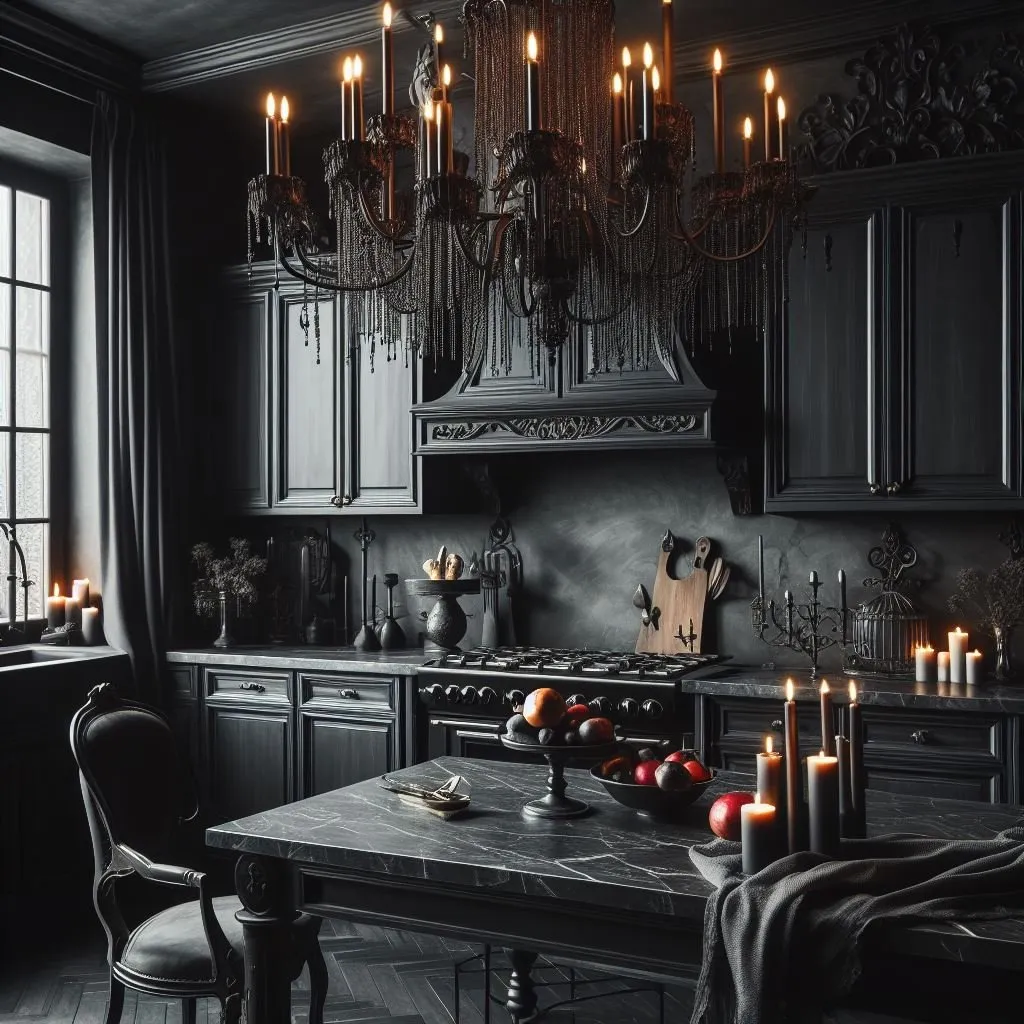
While staying true to the gothic style’s historical roots, it’s possible to incorporate modern elements. This creates a kitchen that is both stylish and functional. Using sleek, modern appliances against a gothic backdrop can create a striking contrast. Incorporating minimalist hardware and clean lines can prevent the space from feeling too heavy. A balance between old and new is what distinguishes the modern gothic design. These touches can make your kitchen more appealing to contemporary tastes.
Creating a Cohesive Gothic Kitchen
Creating a cohesive gothic kitchen involves planning and attention to detail. Decide on a color palette, choose your furniture, and select your decor elements. Ensuring that all elements work together to achieve a unified look is essential. Start with the main elements, such as cabinets and countertops, then add layers of details. Paying attention to the lighting and ensuring that all the elements of your kitchen reflect the same theme is the key. The result will be a kitchen that truly reflects your personality.
